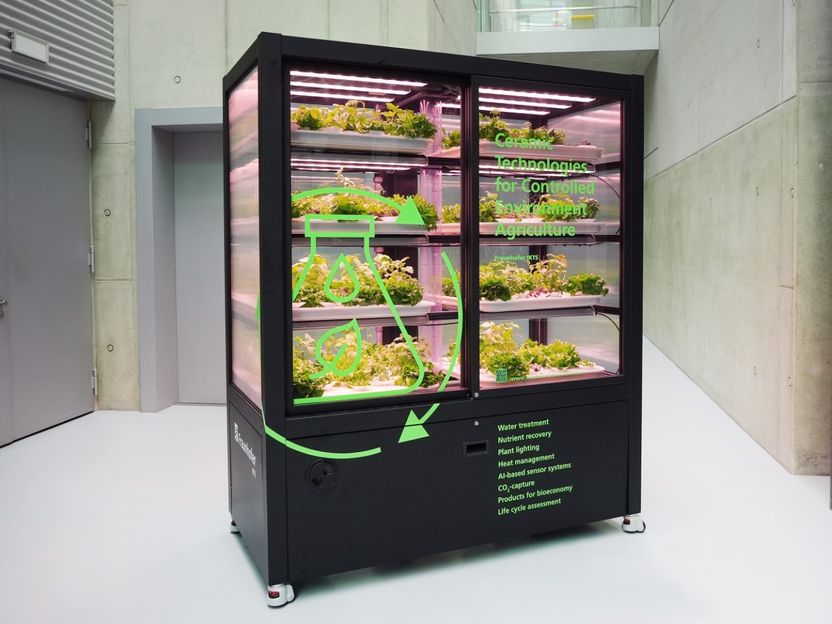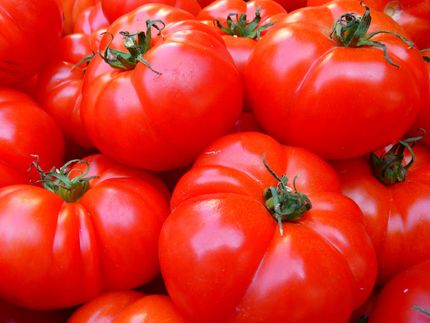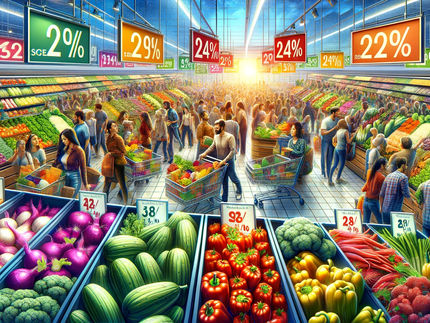Vitamins from the roof
“Instead of transporting thousands of tons of vegetables and fruit along the highways, we want to bring the greenhouses to the consumers”
Today, fruit and vegetables are transported thousands of kilometers to Germany. A team at Fraunhofer IKTS now wants to bring horticulture to the cities with efficient and compact water, energy and gas management – and thereby strengthen regional self-sufficiency.

Fraunhofer IKTS offers compact technologies and components that enable efficient water, energy and gas management for indoor farming units.
© Fraunhofer IKTS
Fresh peppers, crisp salads and juicy tomatoes – German consumers take all this for granted. Supermarket shelves are full of them. But most of these vegetables come from far away. According to the German Federal Statistical Office, a good quarter of all vegetable and fruit imports last year came from Spain – and for peppers and lettuce, the figure was as high as 50 percent. In total, Germany imported around 1.6 million tons of fruit and 1.3 million tons of vegetables from the Iberian Peninsula. Thousands of truck journeys were necessary for this. In addition, most of the vegetables and fruit are grown in Andalusia, a particularly dry region where the water shortage and associated environmental problems have recently worsened.
Bringing greenhouses to the consumer
In light of this situation, it seems sensible to grow even more vegetables and fruit in Germany in the future – ideally in close proximity to consumers in cities. One solution could be compact, energy-efficient and water-saving greenhouses that allow harvesting all year round. “Instead of transporting thousands of tons of vegetables and fruit along the highways, we want to bring the greenhouses to the consumers,” says Prof. Michael Stelter, deputy director of the Fraunhofer Institute for Ceramic Technologies and Systems IKTS in Dresden. “Our goal is to work with medium-sized companies to set up such small plants at numerous locations in Germany – we're talking about indoor farming.” These compact, efficient greenhouses could be set up on house roofs or smaller open spaces, for example, and – in order to save space – could even be laid out on top of each other in several levels. The experts refer to this as “protected cultivation” or “controlled environment agriculture” (CEA).
The entire technology from a single source
The institute offers all the necessary technology from a single source: irrigation water and nutrient recycling, heat and moisture management, lighting and sensor technology – to provide perfect care for the plants. “In our institute, we have developed many of the components required for this in recent years. In addition, we have the knowledge from other projects in energy and environmental technology to integrate the various technologies into an automated and fully digitalized overall system,” says Michael Stelter. In this way, the institute would like to enable small and medium-sized companies in particular to enter this market segment or help companies already active in this industry to expand their portfolio. Existing indoor farms can also be supported in operating more successfully economically through leaps in efficiency.
Thanks to IKTS technologies, the greenhouses can be conceived much smaller than the large plants in Spain or the Netherlands. The appeal lies in the very compact technology that can be accommodated in a small space. This starts with heating. Here, the IKTS team relies on zeolites, special ceramics that capture and release atmospheric moisture – and incidentally generate heat or absorb it from the environment. When zeolites release stored water through evaporation, they absorb heat. If they later absorb moisture again, they release the heat again. The trick is to direct the airflow in the plants so that evaporation and water absorption are perfectly controlled. This allows excess heat to be stored during the day and released during the cold night.
Perfect lighting and nutrient dispensing
For multi-story indoor farming facilities and for long winter days, additional lighting is also needed. “We have the appropriate energy-efficient LED and lighting technology,” says IKTS project manager Nico Domurath. “We can adjust the light exactly to the plants' needs – for example, providing more photons when they need more energy for photosynthesis. In addition, we can package LEDs in such a way that they can withstand the warm, humid conditions in the greenhouse for a very long time.”
A major advantage of indoor farming is that water and nutrients can be cycled. When watering outdoors, a lot of water is lost through evaporation, not so in closed systems. The plants are nourished by a special solution. The excess nutrient solution is collected and treated by ceramic membranes. Sensors check the residual nutrient content in it. This means that only small amounts of new nutrients need to be added before the solution is fed back to the plants.
Harnessing biomass and waste heat from the region
Growing vegetables and fruit on site in small indoor farming facilities also has the advantage of being able to use biomass from the region as a nutrient. For example, technologies have been developed at Fraunhofer IKTS to process fermentation residues from biogas plants into high-quality plant nutrients. Regionality even has another advantage: the plants can be built specifically where synergies arise – for example, in the vicinity of commercial enterprises that produce a lot of waste heat. This would enable the heat demand in winter to be covered in an environmentally friendly way. In cities, large data centers and server farms that generate a lot of heat could be considered.
Nico Domurath's team is currently demonstrating how all the technology can be accommodated in a small space using several small-scale indoor farming systems. “We can easily scale these up – according to the needs of future interested parties,” he says. “We also offer a comprehensive cost and life cycle analysis. We find out which location is most suitable and which technologies can achieve the most positive effects,” adds Michael Stelter. “In this way, we want to pave the way for indoor farming to become widely used in Germany.”



























































